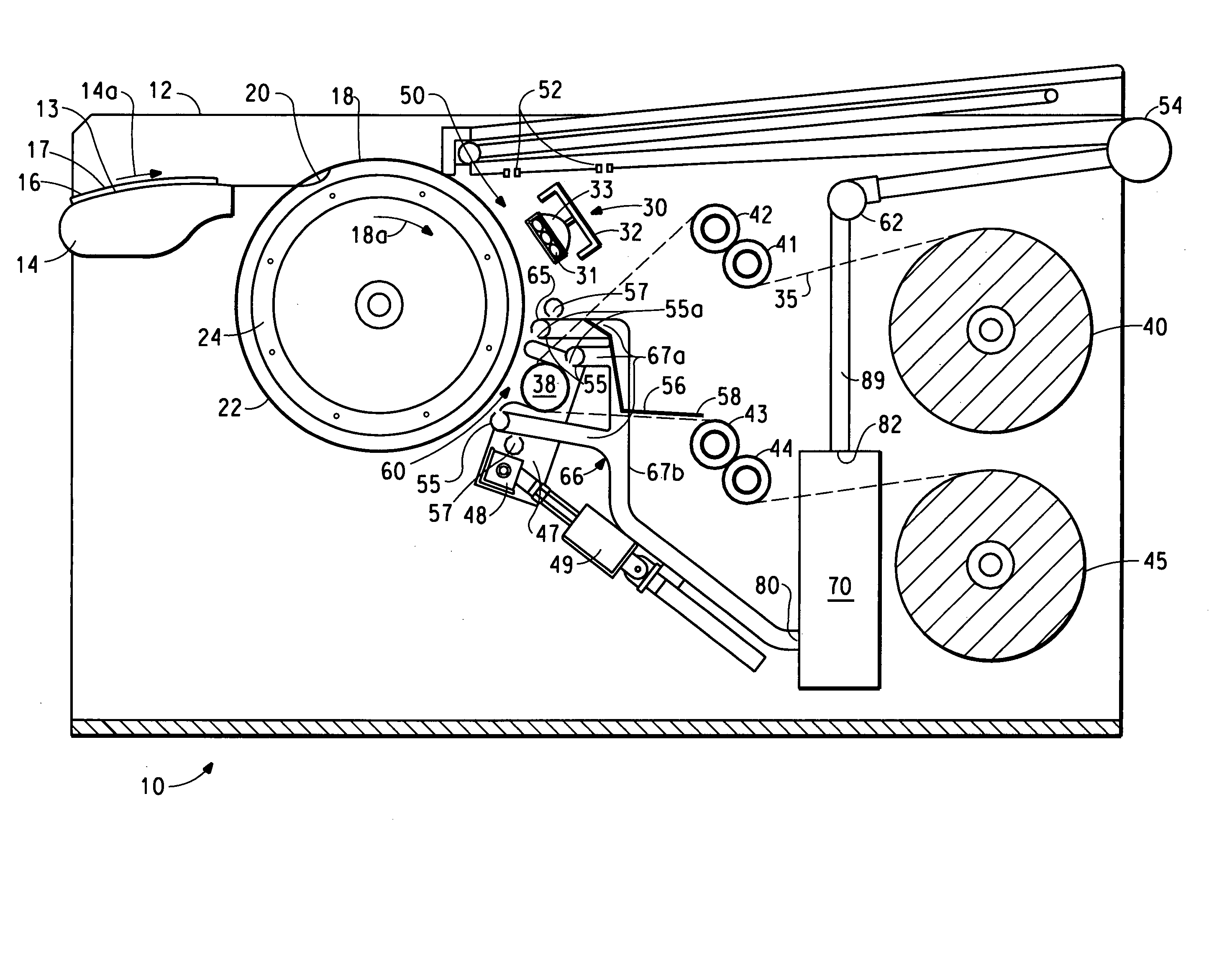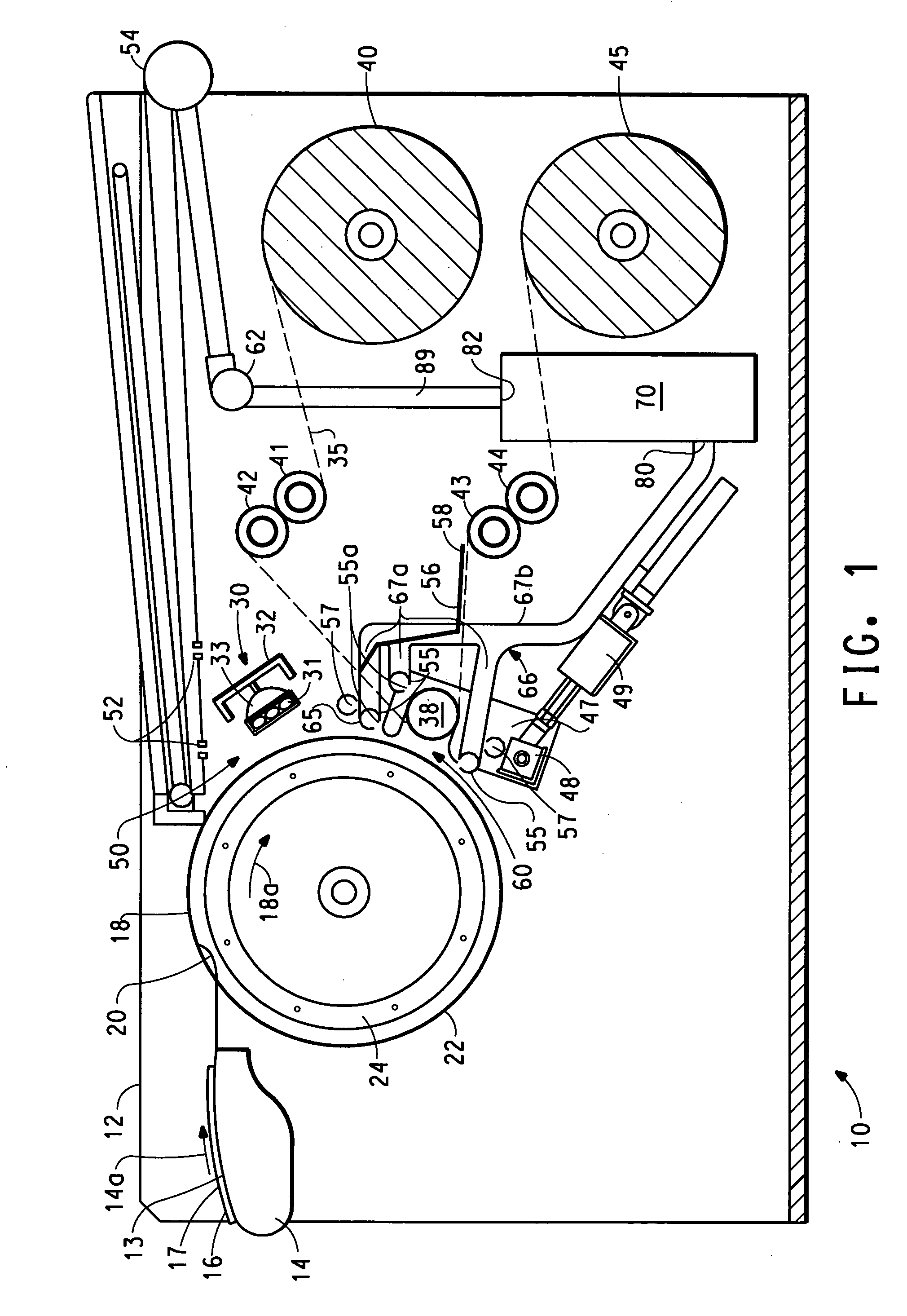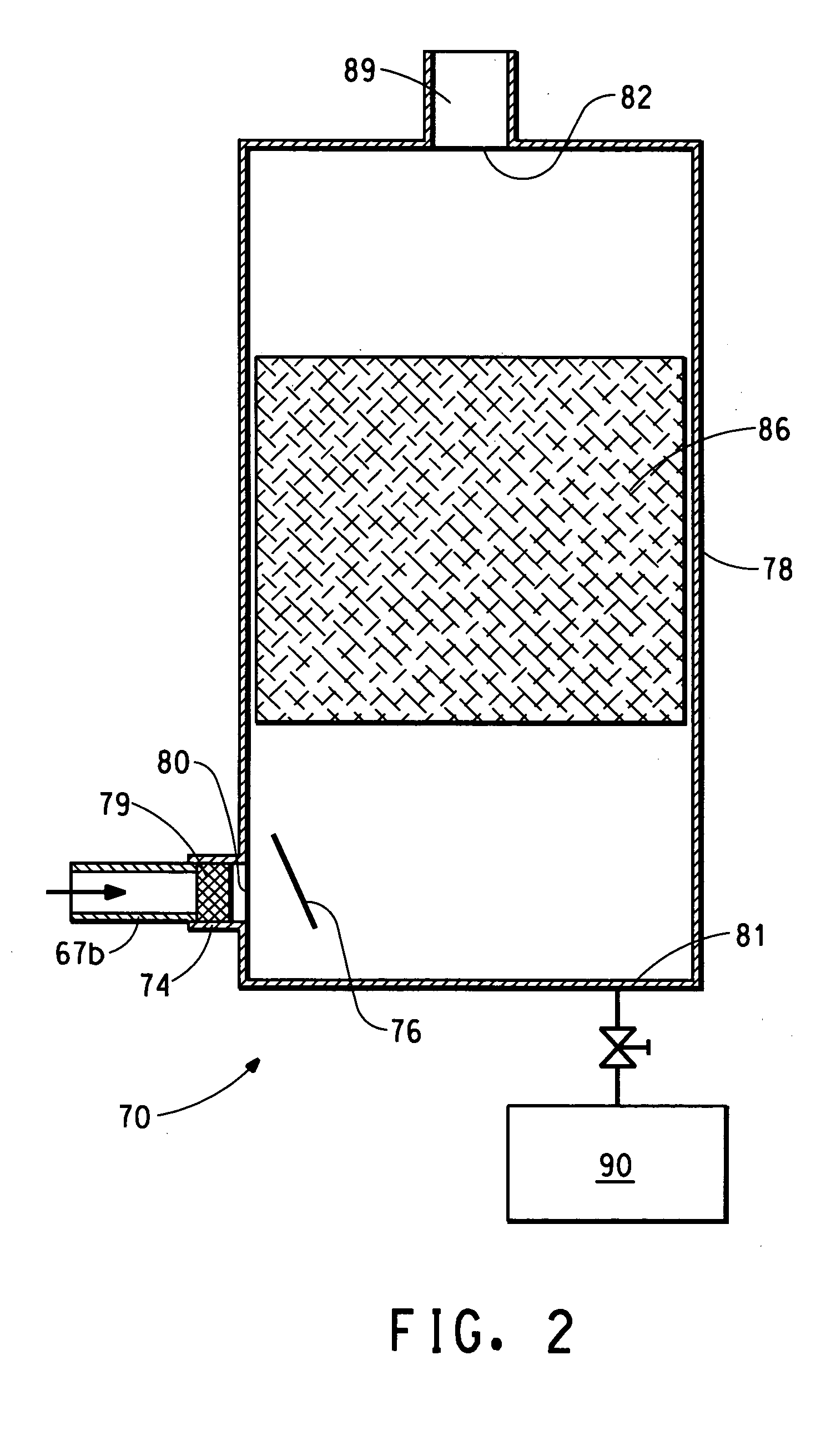Method and apparatus for thermal development
a technology of thermal development and photosensitive elements, which is applied in the direction of diffusion transfer processes, instruments, photosensitive materials, etc., can solve the problems of time-consuming, difficult to maintain the cleanliness and operation of the processor, and the mess within the processor
- Summary
- Abstract
- Description
- Claims
- Application Information
AI Technical Summary
Benefits of technology
Problems solved by technology
Method used
Image
Examples
Embodiment Construction
)
[0017] The present invention is an apparatus and process for thermally developing a photosensitive element containing a composition layer capable of being partially liquefied, preferably to form a flexographic printing form. The apparatus heats the composition layer to a temperature sufficient to melt at least a portion of the layer. In particular, the present invention relates to an apparatus and process for controlling vapor and / or condensate from the vapor that is generated during thermal development of the photosensitive element.
[0018] Thermal development heats the photosensitive element to a development temperature that causes uncured portions of the composition layer to liquefy, i.e., melt or soften or flow, and be carried away by contact with an absorbent material. Cured portions of the photosensitive layer have a higher melting temperature than the uncured portions and therefore do not melt, soften, or flow at the thermal development temperatures. Thermal development of ph...
PUM
 Login to View More
Login to View More Abstract
Description
Claims
Application Information
 Login to View More
Login to View More - R&D
- Intellectual Property
- Life Sciences
- Materials
- Tech Scout
- Unparalleled Data Quality
- Higher Quality Content
- 60% Fewer Hallucinations
Browse by: Latest US Patents, China's latest patents, Technical Efficacy Thesaurus, Application Domain, Technology Topic, Popular Technical Reports.
© 2025 PatSnap. All rights reserved.Legal|Privacy policy|Modern Slavery Act Transparency Statement|Sitemap|About US| Contact US: help@patsnap.com



